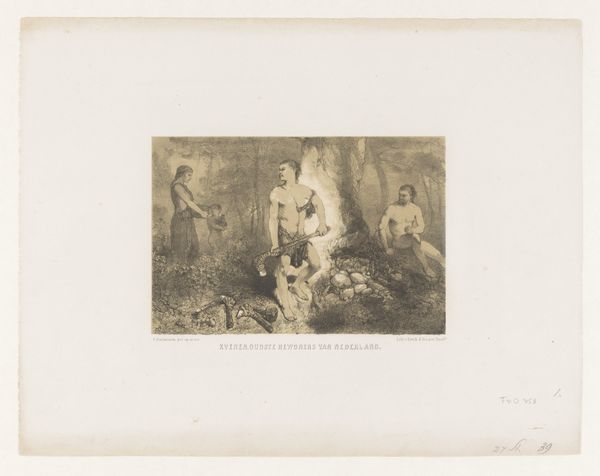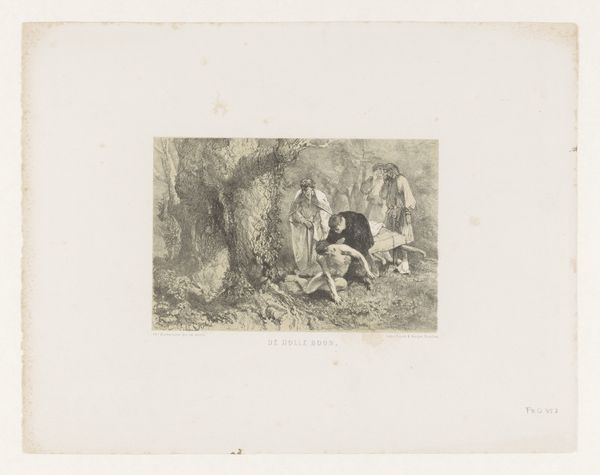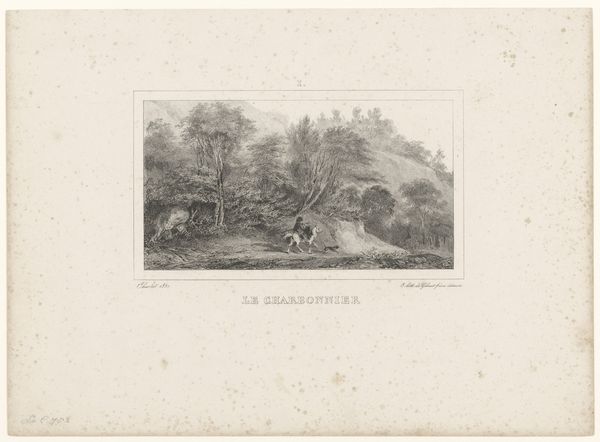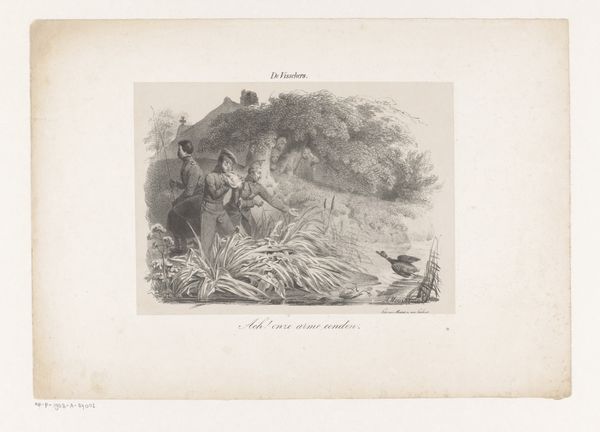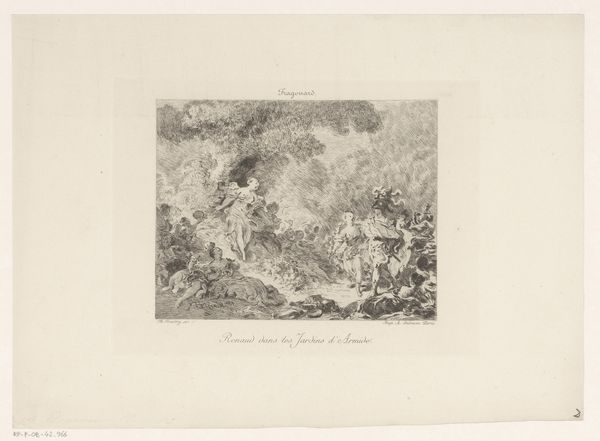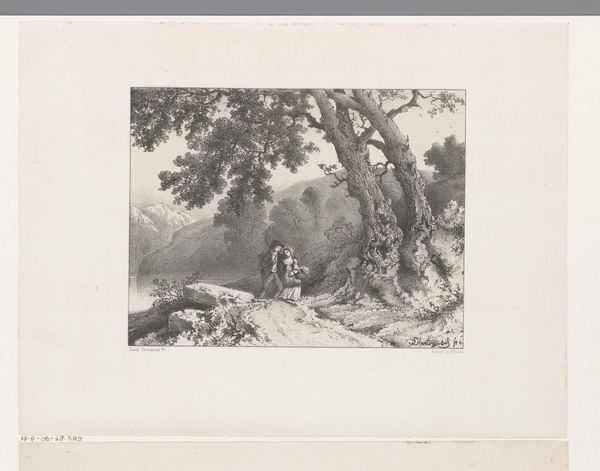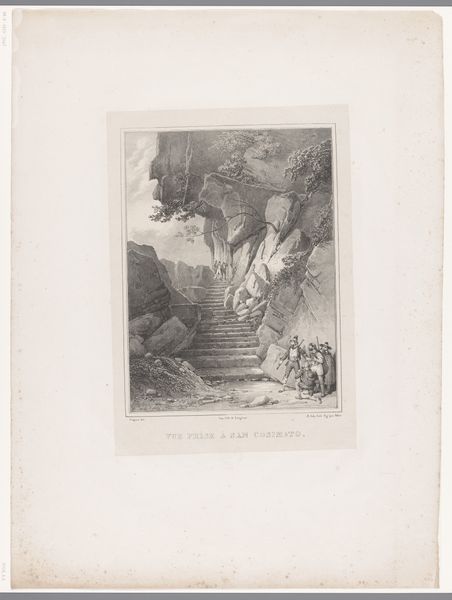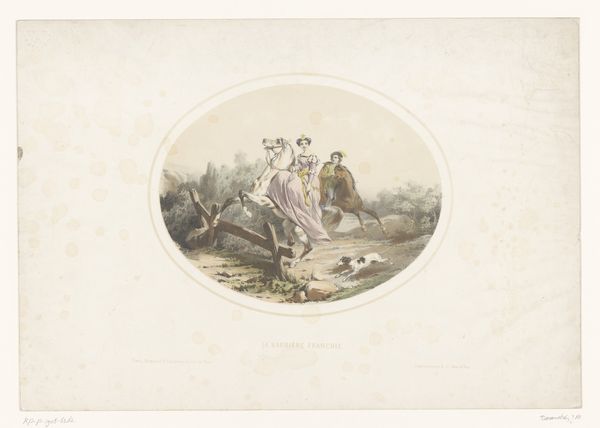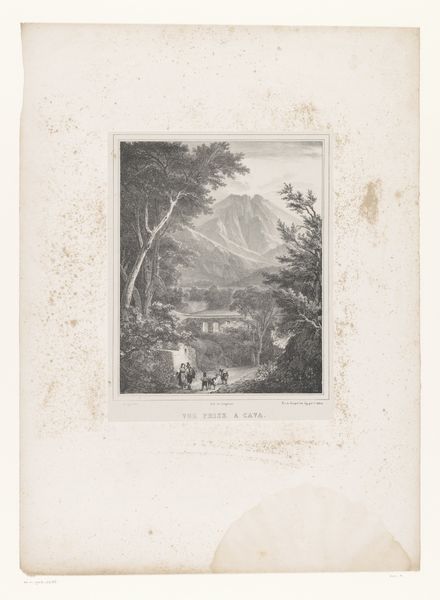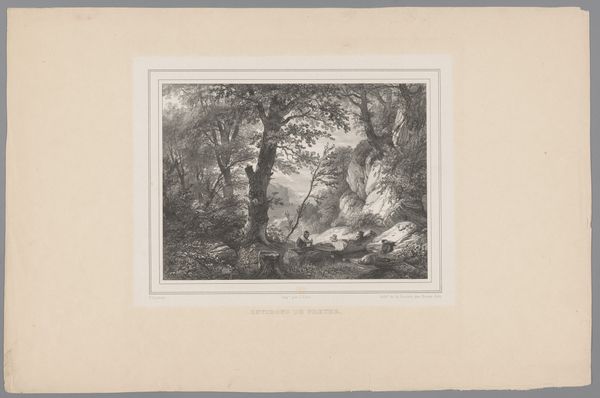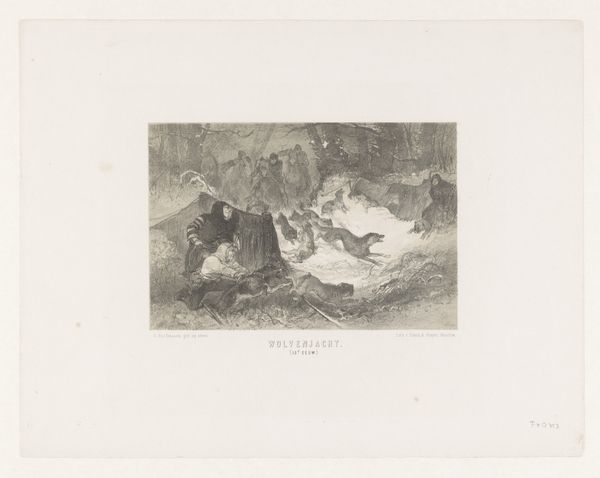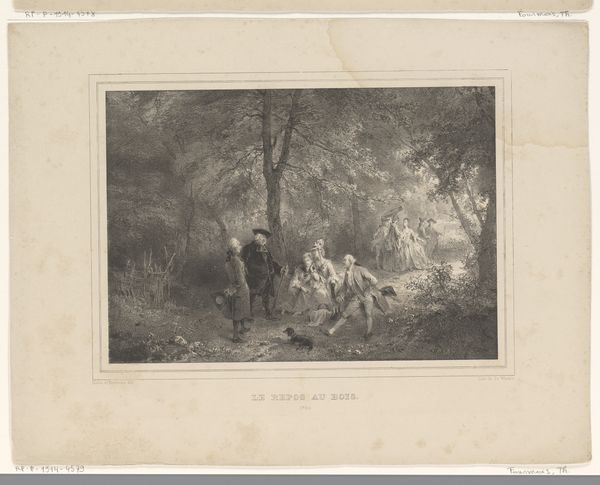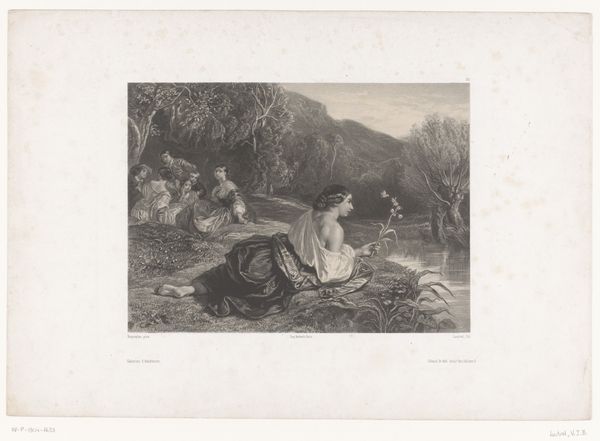
print, etching
#
narrative-art
# print
#
etching
#
landscape
#
figuration
#
romanticism
Dimensions: height 111 mm, width 162 mm
Copyright: Rijks Museum: Open Domain
Curator: "Vrouw in de armen van een man bij een ruïne," or "Woman in the Arms of a Man Near a Ruin," created in 1844 by Charles Jacque. It's an etching, exhibiting Jacque's talent in printmaking, particularly in capturing emotional narrative within a landscape. Editor: You know, my immediate reaction is that this looks like some heavy-duty romance novel cover. A damsel in distress, a knight in questionable armor, and a gloomy ruin… very dramatic. Curator: Indeed. The ruin itself is evocative, it serves as a powerful symbol. Ruins in art frequently signify the transience of human endeavor, a fallen empire perhaps, or lost love and past glory… even a sort of sublime vulnerability, wouldn't you agree? The human element—the couple—foregrounded against its decay makes this theme even more salient. Editor: Vulnerability is spot on. She looks completely out of it. I can’t tell if he's rescuing her, comforting her, or… well, up to no good? The shading is ambiguous; are those menacing shadows cast on his face, or am I just projecting? That crumbling tower really adds a level of gloom, or rather invites that reading. Curator: His stance is interesting, it suggests perhaps more concern than malice, however. Look how his hands hold her but also reach outward; I find he reflects an urgent protector offering comfort at the threshold between shelter and total exposure. It's an archetype often found within the artistic movement of Romanticism that prizes such stark juxtapositions. Editor: Ah, Romanticism! It would make sense then to suggest the work speaks not just of their particular situation, but is indicative of broader concerns relating to themes such as liberty, the sublime power of nature, emotional extremes… Is it about history weighing down the present? The man being helpless to stop the erosion of time reflected in those fallen walls? It begs for narrative… Curator: The symbolism goes beyond the obvious depiction, wouldn't you concur? Each crumbling stone, each gesture—it speaks of broader human dramas played out across historical epochs. That’s the potency of Jacque's work here, finding monumental emotional arcs in miniature forms. Editor: That sounds about right. It definitely gives you that brooding feeling, doesn't it? You want to invent a story, or walk away mulling over something somber. I dig that effect. Curator: Precisely. It resonates long after one looks away.
Comments
No comments
Be the first to comment and join the conversation on the ultimate creative platform.
